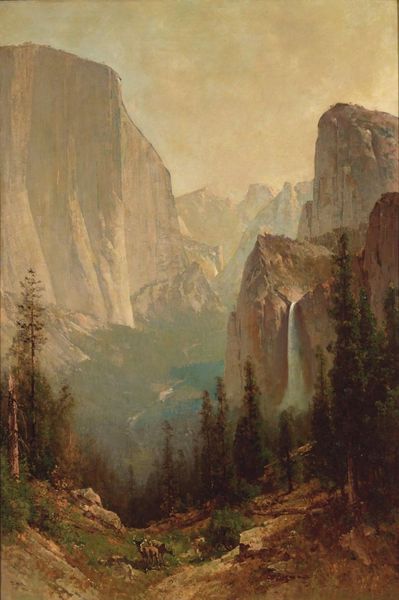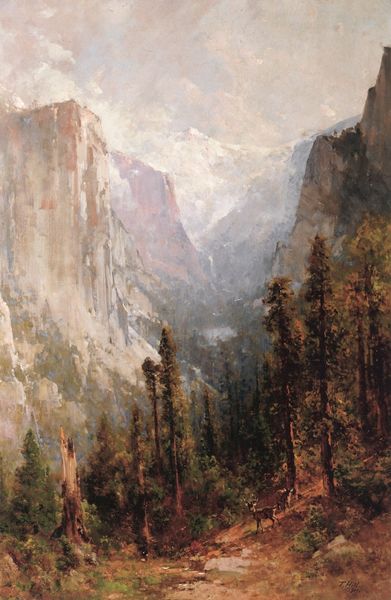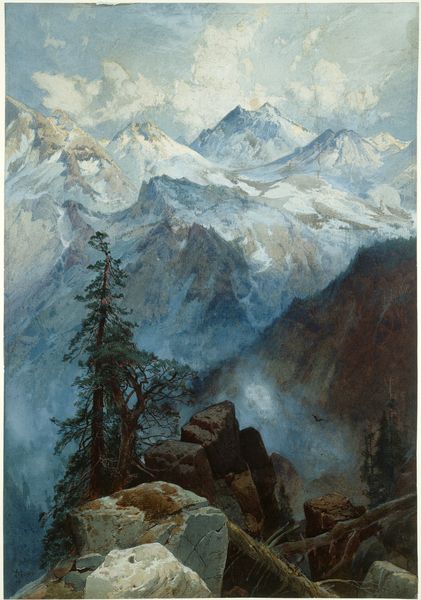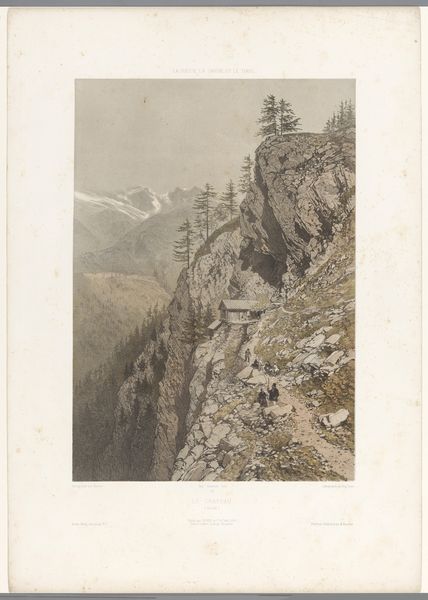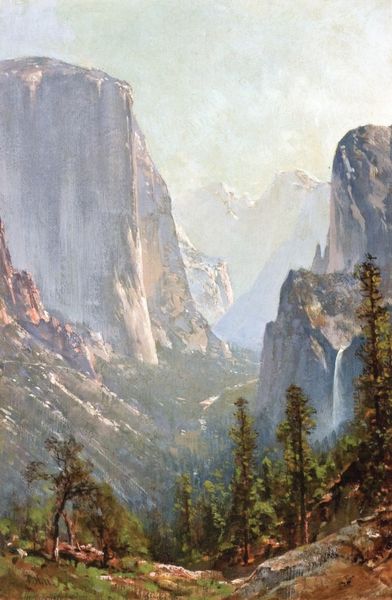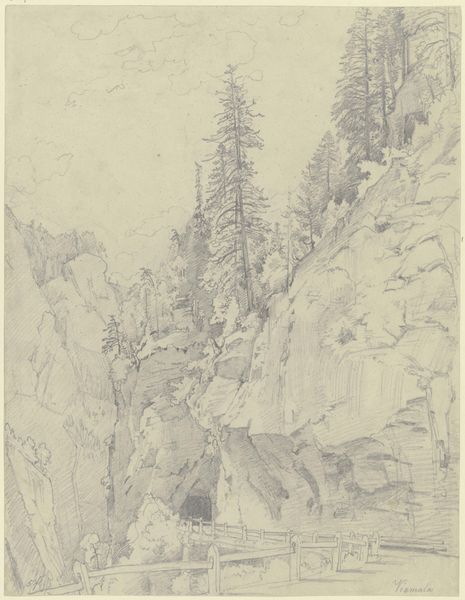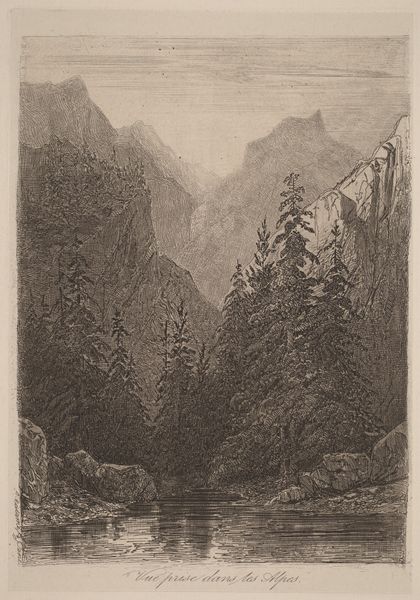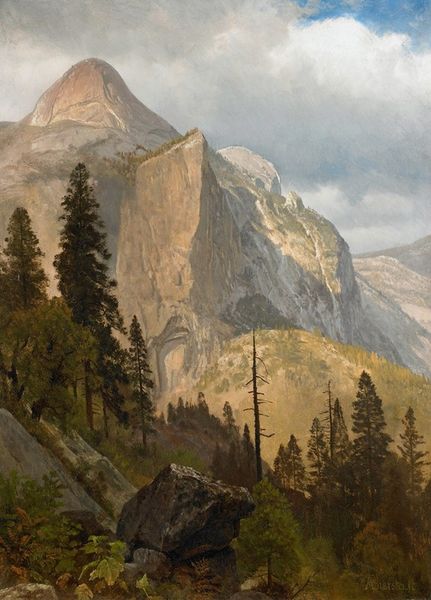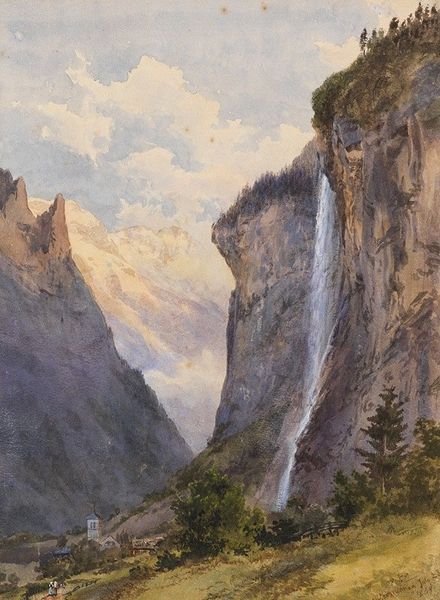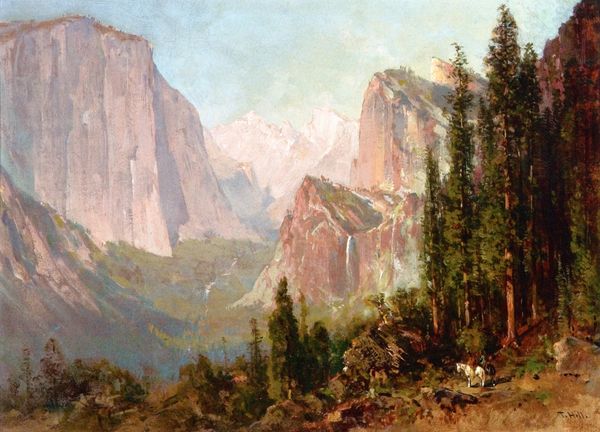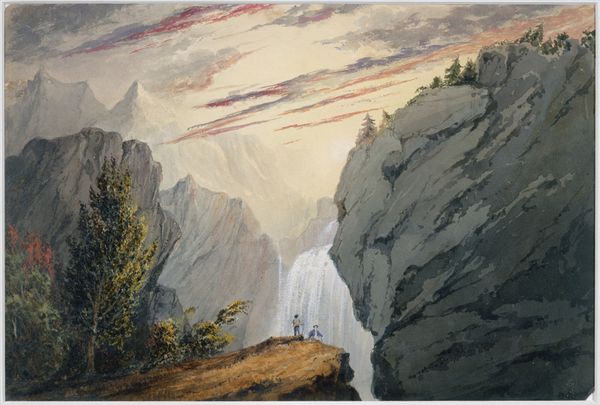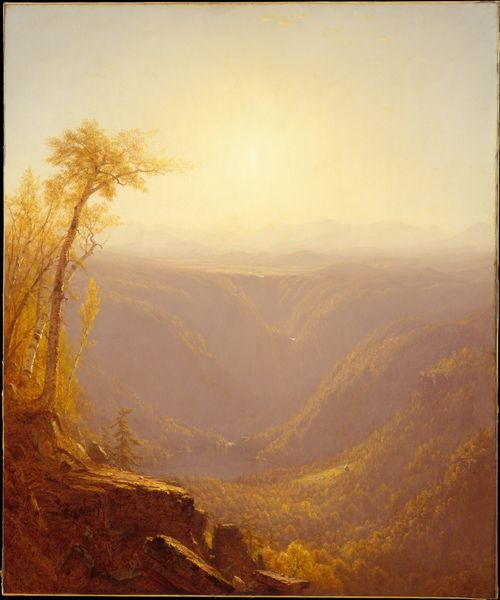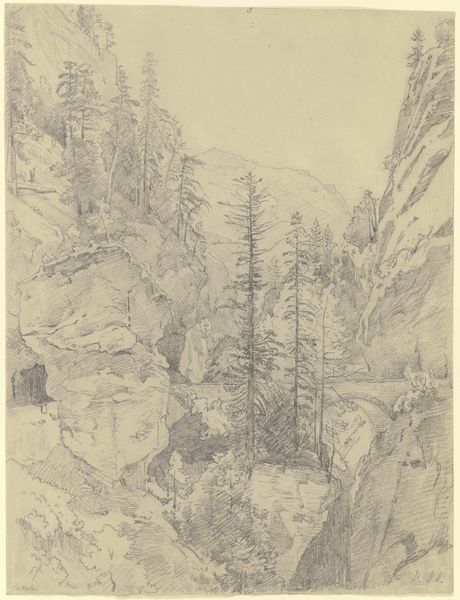
Dimensions: 26 x 13in. (66 x 33cm) Framed: 38 3/4 x 25 11/16 x 5 1/2 in. (98.5 x 65.3 x 14 cm)
Copyright: Public Domain
Editor: Here we have William Keith's "Yosemite Falls, from Glacier Point," painted in 1879. It’s an oil painting, and I'm struck by how it balances realism with a kind of ethereal beauty. What can you tell me about it? Curator: This painting is firmly rooted in the tradition of the Hudson River School, but we see a shift. The scale is classic, designed to evoke awe. How does the depiction of the landscape strike you in terms of American expansion and the cultural understanding of the ‘frontier’ at that time? Editor: I see the appeal in nature, a sense of grandeur. But also, I am aware of the impact of colonization that shaped these landscapes, specifically through Indigenous displacement. How would paintings like this figure into those power dynamics? Curator: Precisely. Consider that these paintings coincided with, and perhaps even facilitated, a national project of claiming the land. Paintings romanticized the landscape for an eastern audience while justifying western expansion, overlooking or erasing the presence and claims of Native populations. Is that problematic? Editor: It feels incredibly contradictory. A celebration of nature, that completely disregards its original inhabitants. Curator: Absolutely. And this tension - the sublime beauty against a backdrop of dispossession - that’s critical to understanding its historical context and cultural impact, influencing conservation movements and reinforcing a sense of national identity intertwined with landscape. What did you learn about its use as a national symbol? Editor: I learned that artwork of landscape is much more complex than how nature presents itself because history changes the lens in how people respond to art.
Comments
No comments
Be the first to comment and join the conversation on the ultimate creative platform.
